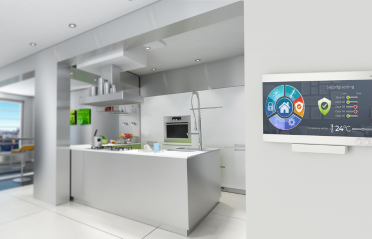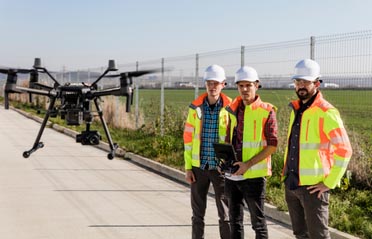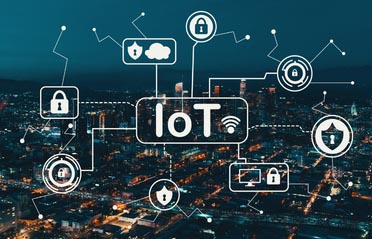Overview
As market dynamics change, it’s important for businesses to monitor how things are panning out. Some of the most successful businesses are the ones who think out of the box, come up with unorthodox ideas and combine these technologies together to make it a solution, which can’t be possible without keeping an eye on the latest trends in the market, as they pave the way for future innovations in a particular field.
Therefore, in a world dominated by AI, data, and cutting-edge technologies, it’s hard to leave the ‘Internet of Things’ out of the list. In fact, IoT may be one of the most important technologies out there right now, as it is responsible for the success of many other technologies, like machine learning.
According to a study by Mordor Intelligence, the IoT market value is expected to rise to $1.39 trillion by 2026. Now, the major factors that will be driving these numbers are:
- The COVID-19 pandemic accelerated the advancement of remote monitoring, smart home devices, and data analysis solutions.
- Businesses that are contending to develop better AI solutions, often require a network of advanced sensors and edge computers within the scope of IoT.
- IoT networks can accomplish some tasks more efficiently than centralized solutions.
Here are some of the most notable upcoming trends that will provide us with an insight into the future of IoT.
IoT in Public Sector
Governments are tasked with safeguarding the health, safety, and prosperity of people. This makes the application of IoT even more obvious in the public sector, as it can be used to ensure the seamless operation of routine tasks while focusing on long-term, demanding projects, like smart cities.
Thus, IoT can be used for the following cases:
- Traffic monitoring: By able to monitor traffic with sensors placed across city for better control over intersections and consequently for better traffic optimization.
- Water level monitoring: By helping the authorities to be better equipped to tackle any situation of active or potential flooding, by detecting the water level through IoT sensors.
- Pollution reduction: Detecting air pollution through IoT-enabled sensors will allow the public sector to understand causes and fluctuations in air pollution levels. Recent advances in IoT led to the manufacturing of small, portable, low-cost, and connected sensors. With this tech, the government can install pollution sensors on any street.
IoT in Entertainment
The Entertainment Industry stepped into a new era of hope and success after the Covid-19 pandemic. In a time, when theatres and physical live shows turned into a dream for many, technology helped people by serving them the perfect dose of entertainment, and adopting IoT is one such example. As IoT turned out to be an important channel for direct-to-consumer interaction, it helped content providers with an opportunity to deliver and monetize their content across a new range of devices, and hence create engaging experiences.
Some interesting uses cases are as follows:
- Augmented reality:It is the new norm in today’s digitalized world, where sensors and other IoT-based elements are used to simulate real environment using enhanced virtual features. With IoT imaging, AR is slowly gaining its footprint in areas such as online retail, but the sector that is seeing a greater liking of AR is the entertainment and gaming sector. Some examples include:
- Pokemon Go, a mobile game where users can virtually capture Pokemon characters at real-world sites and engage with other players at physical hubs.
- The NFL and Nickelodeon partnered to show animated stats and elements over the field during a live game.
- Personalized content: Applying ML, and AI to the data collected from IoT devices about user activity, behavior, location, and demographics; can help in recommending personalized content.
IoT in Travel & Hospitality
While IoT is being harnessed in a variety of sectors, the travel and tourism industry is particularly well-positioned to reap the rewards as it can offer more automation, personalization, and a better consumer experience. It can also help with the day-to-day operations of a hotel or travel agency. Smart technologies can assist improve the physical condition of a hotel and its rooms while also lowering energy bills. Sensors might potentially be deployed on flights to inform flight attendants when passengers’ anxiety levels rise above a specific threshold. Meanwhile, the Internet of Things (IoT) can provide travelers with more control and access to information through their phones.
IoT in Retail
As IoT is widening its footprint, it is making customers experience of shopping even more “smart” or connected, through a network of connections linking the physical and digital worlds into an ecosystem of devices, including vehicles, stores, and software. Combining IoT and retail allows store managers to discover methods to communicate and forge a connection with customers, create a fast and direct customer experience, optimize product maintenance, and form long-lasting bonds with first-time customers. Thus, use cases of IoT that are redefining the retail industry, are:
- Smart Stores: The shopping experience is changing, from robots roaming around the aisles to assisting in inventory management and allowing customers to buy products on the spot rather than waiting in a line, the entire customer journey is being transformed.
- Smart Warehouses: Retail warehouses are becoming smarter through the use of IoT technology in a variety of ways, including making it easier to locate things, decreasing damage, and enhancing efficiency and production.
IoT in Education
Just like any other sector, IoT has been a boon for the education industry as well. It transformed the conventional way of instructional approaches to more efficient teaching methods, wherein online courses to integrated mobile technology took the centre stage; and continue to supplement pencils, paper, and chalkboards as learning opportunities expand.
Smart classrooms are one such example, that has been built in most schools and colleges to improve the teaching quality and to assist teachers in developing novel ways of explaining subjects, allowing students to grasp concepts more quickly.
IoT in Networking
As IoT is slowly seeping into the world we live in, and the way we do business; it is imperative for organizations to find out ways to connect the increasing number of devices in a smart, secure, and optimized way to provide potential services for digital businesses processes. As once an object is compromised, the whole enterprise becomes vulnerable to cyber-attacks and threats. Therefore, some of the innovative solutions which can be helpful to tackle such challenges are:
- Edge Computing: Edge computing is looked upon whenever prompt decisions need to be made, especially in cases like security and safety; as edge networks process information closer to the user instead of calculating everything at a central location, which helps to alleviate the load on the entire network of users. For example, machinery getting automatically stopped when someone is in its restricted area, is one way that IoT edge computing can be used to protect people from harm. Autonomous vehicles require data to make vital decisions in real time, which might be the difference between life and death on the road.
- IoT connectivity: Wireless data rates have been the key hurdle that IoT networks have had to overcome in recent years. As infrastructure is being constructed for newer types of connectivity technologies, including 5G, Wi-Fi 6, LPWAN, and satellites, the IoT solutions are getting more feasible
Future Prospects of IoT
The future of IoT rests on each of the development discussed above, as well as beyond, with applications ranging from retail to indoor navigation. It’s also crucial to remember that, in many circumstances, the Internet of Things is not a stand-alone technology, but combining technologies like IoT and AI is what will enable businesses to cultivate innovation and remain relevant against their competitors. All it takes to get started is an idea or a vision to modernize business to meet the challenges of the future.

Product Engineering Services Customized software development services for diverse domains
Quality Assurance End-to-end quality assurance and testing services
Managed Services Achieve scalability, operational efficiency and business continuity
Technology Consulting & Architecture Leverage the extensive knowledge of our Domain Experts



